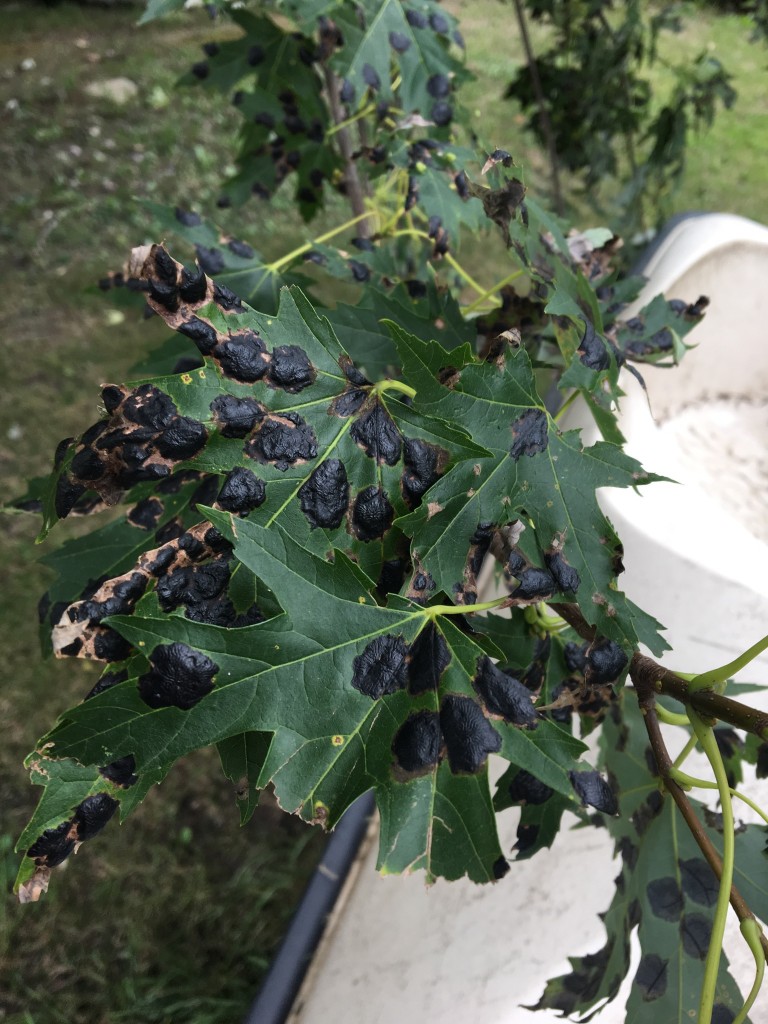In many cases, diagnosing plant problems requires an in-person look at the plant in question. Too many disorders look similar when all you have is a photo to go by.
Earlier this week someone sent me a photo asking about spots on a valuable tree they have in their front lawn. That was an easy one. I took one quick look at the photo and knew right away what it was. Their maple tree was infected with a fungal disease called “tar spot”. It’s quite easy to identify because in this case the name is very descriptive, the leaves really do look like they’re covered with spots of tar.
Even though it looks pretty bad, tar spot is relatively harmless even in a heavily infected situation. There’s no good way of preventing the disease. Some years are worse than others for tar spot and some varieties seem to be disposed to having more dramatic symptoms than others.
The spores from the disease over winters in fallen leaves so you wound think that raking them up and disposing of them would help the situation. Unfortunately the fungal spores can travel for miles in the air and can land on your tree and take hold.
When a tree has a severe case of tar spot, it can lose many of its leaves causing the tree raking season tobegin earlier than normal.
One bright spot is: since tar spot is species specific, it will not spread to other types of trees such as oaks.
Bob
